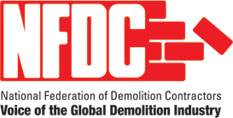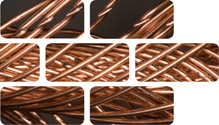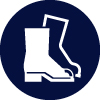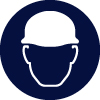
Copper Metal 17 04 01
Copper is a natural element that is ductile with very high thermal and electrical conductivity. Copper is used in various styles and sizes of pipe, tiles, roof sheets and electric cables. Copper is a high value commodity when compared to some other metals. Copper is fashioned into various products of varying quality and finish to suit functional and architectural purposes.
Usage & Probable Locations
Copper that is used in construction is generally functional and is used for water pipes, the core of electric cables, architectural cladding, roof tiles and roof sheets. It is also used in ironmongery, sanitary ware, fixtures and fittings. It can also be found in service ducts as cables and plumbing, on roofs and on external walls.
Personal Protective Equipment
PPE requirements indicated are for guidance purposes only. DRIDS has identified the PPE that is mandatory on all demolition projects and ones that may be required subject to site specific Risk Assessment & Method Statement (RAMS). Hover over the icon to determine the types of PPE required for the removal of this material.
Removal, Segregation & Storage
Copper that is destined for reuse should be deconstructed, segregated and stored carefully and safely, to ensure their integrity and good condition. Products should be stored flat on a suitably sized pallet or in bundles to prevent warping. They should also be stored away from plant movements to prevent damage. Copper destined for recycling need less attention to detail and should be segregated into metal recycling skips. There is little need to store copper inside a building or the need for a cover as they are robust against incremental weather.
Tools
Fixtures, Fittings & Connections
Copper pipes and electricity cables have been traditionally fixed in place with brackets and screws and the connections sealed with solder or compression joints. Copper tiles are mostly nailed in place. Copper roof sheets are usually moulded into place, tacked lightly and the joints soldered or crimped. Copper pipes, roof tiles and roof sheets are rarely painted as they are generally robust and non-corroding.
Health & Safety
Subject to task-specific Risk Assessment & Method Statement (RAMS). Use correct protective equipment for removing screws, nuts and brackets. Wear gloves when handling copper cables with cut edges or coated in plastic sheathing to prevent irritation, cuts and metal splinters. Wear eye protection when using hand tools. Do not walk on wet copper tiles or roof sheets. Use harness protection at height. Only use soldering or cutting tools if properly trained.










